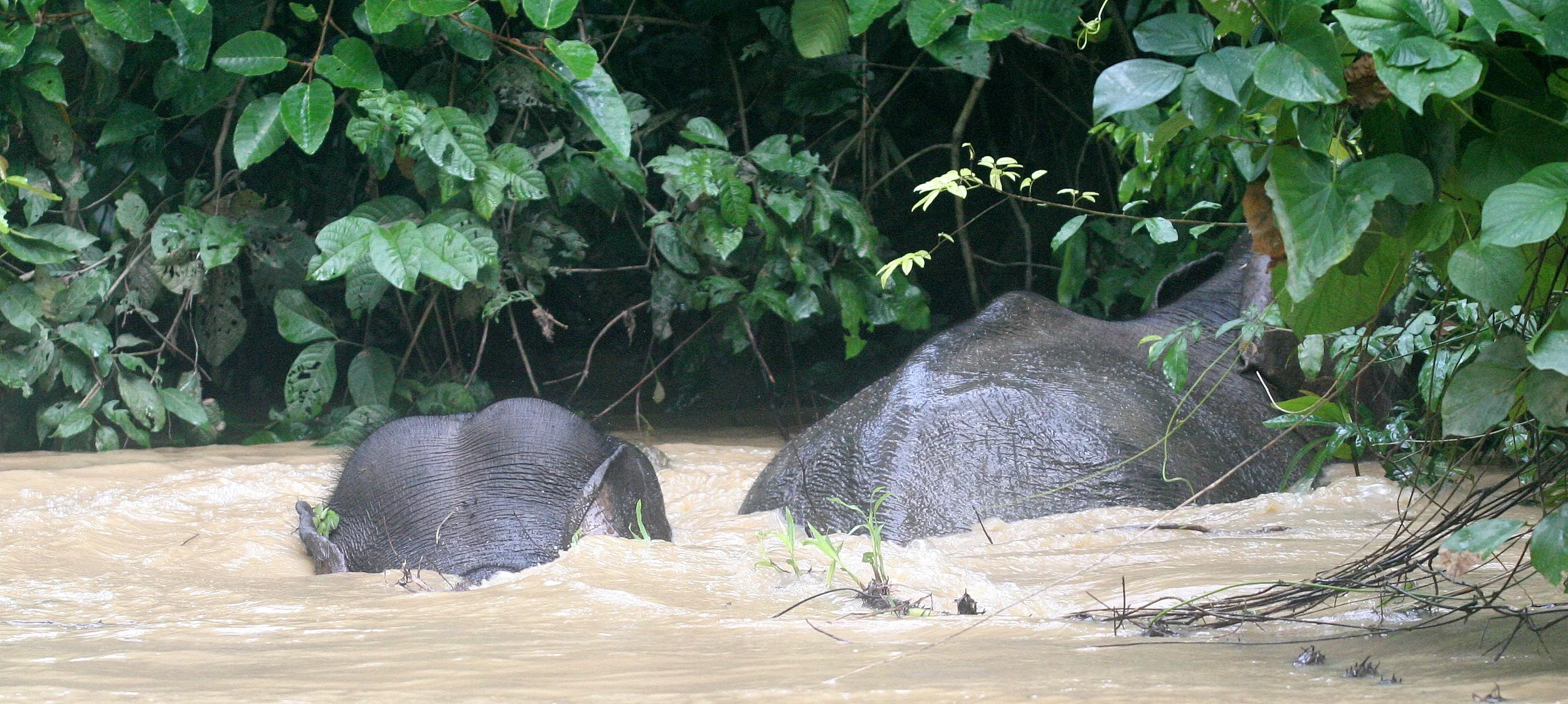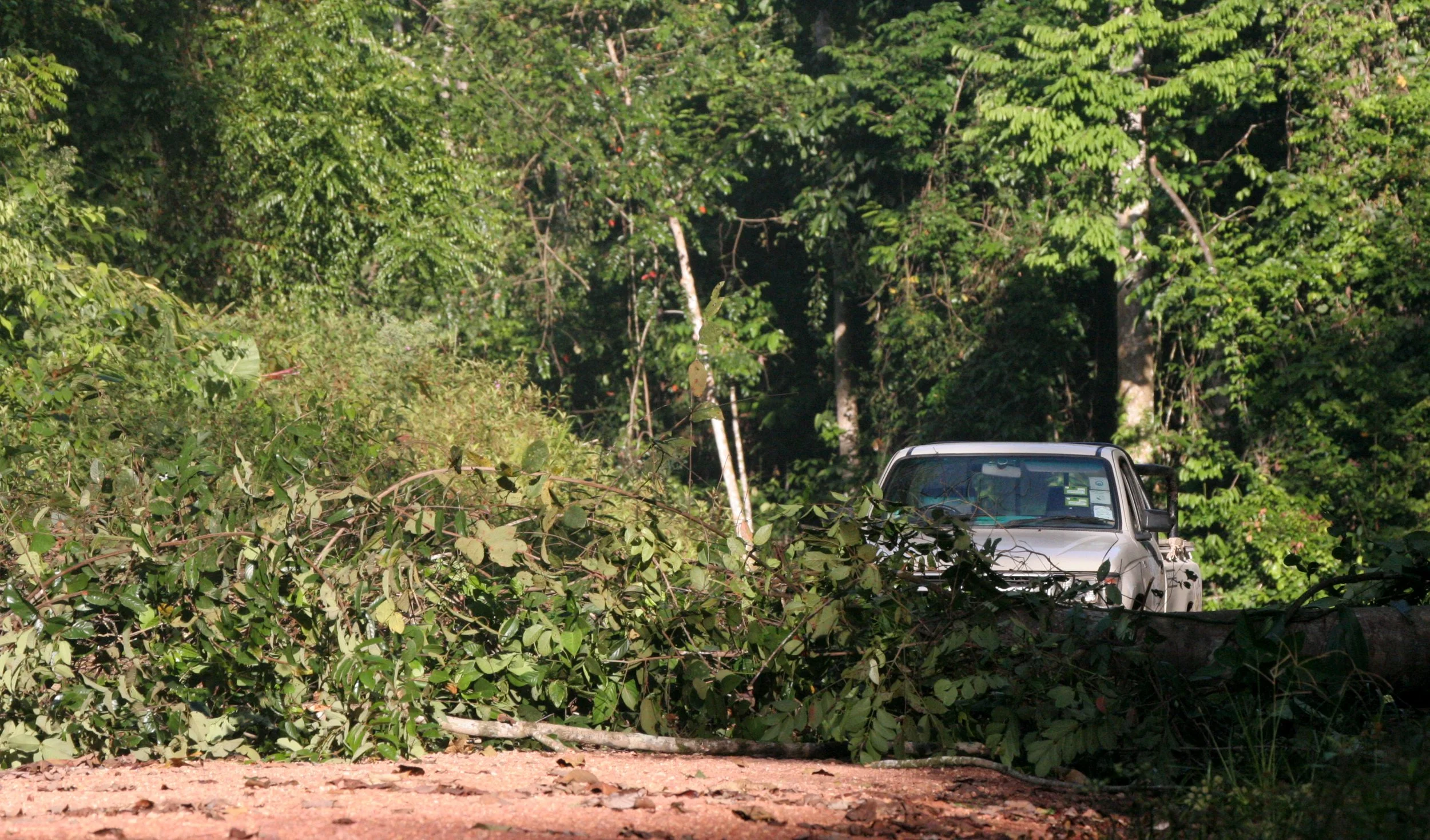The range of wild elephants in Sabah and Kalimantan seems to have expanded very little in the past 100 years despite access to suitable habitat elsewhere on Borneo. Borneo's soil tends to be young, leached, and infertile, and there is speculation that the distribution of wild elephants on the island may be limited by the occurrence of natural mineral sources.
In 1992, the estimated elephant population size in Sabah ranged from 500–2,000 individuals, based on survey work conducted in the Tabin Wildlife Reserve, in Lower Kinabatangan District and in the Deramakot Forest Reserve. An elephant population census was conducted in Sabah between July 2007 and December 2008, counting dung piles along 216 line transects in five main elephant managed ranges, covering a total distance of 186.12 km (115.65 mi). Results of this survey suggest an elephant population of 1,184–3,652 individuals inhabiting the ranges of Tabin, Lower Kinabatangan, North Kinabatangan, Ulu Kalumpang Forest Reserve and the central forest of Sabah. The elephant density and population size varied throughout the five key ranges affected by (i) conversion of lowland forest, (ii) fragmentation of habitat, and (iii) existing land use activities such as logging. The upper catchment of Ulu Segama Forest Reserve had the highest density of elephants with 3.69 elephants per 1 km2 (0.39 sq mi). Only the unprotected central forest area supported an elephant population of more than 1,000 individuals.
In 2005, five female elephants were fitted with tracking devices to study their home range and movement patterns in Sabah. Results suggest that elephant herds occupied a minimum home range from 250 to 400 km2 (97 to 154 sq mi) in non-fragmented forest, while in fragmented forest habitat, the annual home range for elephants is estimated to be around 600 km2 (230 sq mi).
The pre-eminent threats to the Asian elephant today are habitat loss, degradation, and fragmentation, which are driven by an expanding human population, and lead in turn to increasing conflicts between humans and elephants when elephants eat or trample crops. Hundreds of people and elephants are killed annually as a result of such conflicts. Expanding human development disrupts their migration routes, depletes their food sources, and destroys their habitat.
The population of elephants in Kalimantan continues to dwindle as a result of damage to protected forests. As of April 2012 an estimated 20–80 elephants range near 22 villages in the Sebuku subdistrict of Nunukan district in North Kalimantan.
Elephas maximus is listed on CITES Appendix I. The genetic distinctiveness of Borneo elephants makes them one of the highest priority populations for Asian elephant conservation.
In Malaysia, the Borneo elephants are protected under schedule II of the Wildlife Conservation Enactment. Any person found guilty of hunting elephants is liable on conviction to a fine of $RM 50,000 or five years imprisonment or both.
The Oregon Zoo in Portland has the only Borneo elephant in the United States, a rescued female by the name of Chendra, who was found orphaned, alone, hungry, and injured in the wild after her herd was crop-raided in a palm oil plantation.




















































































































































































































































